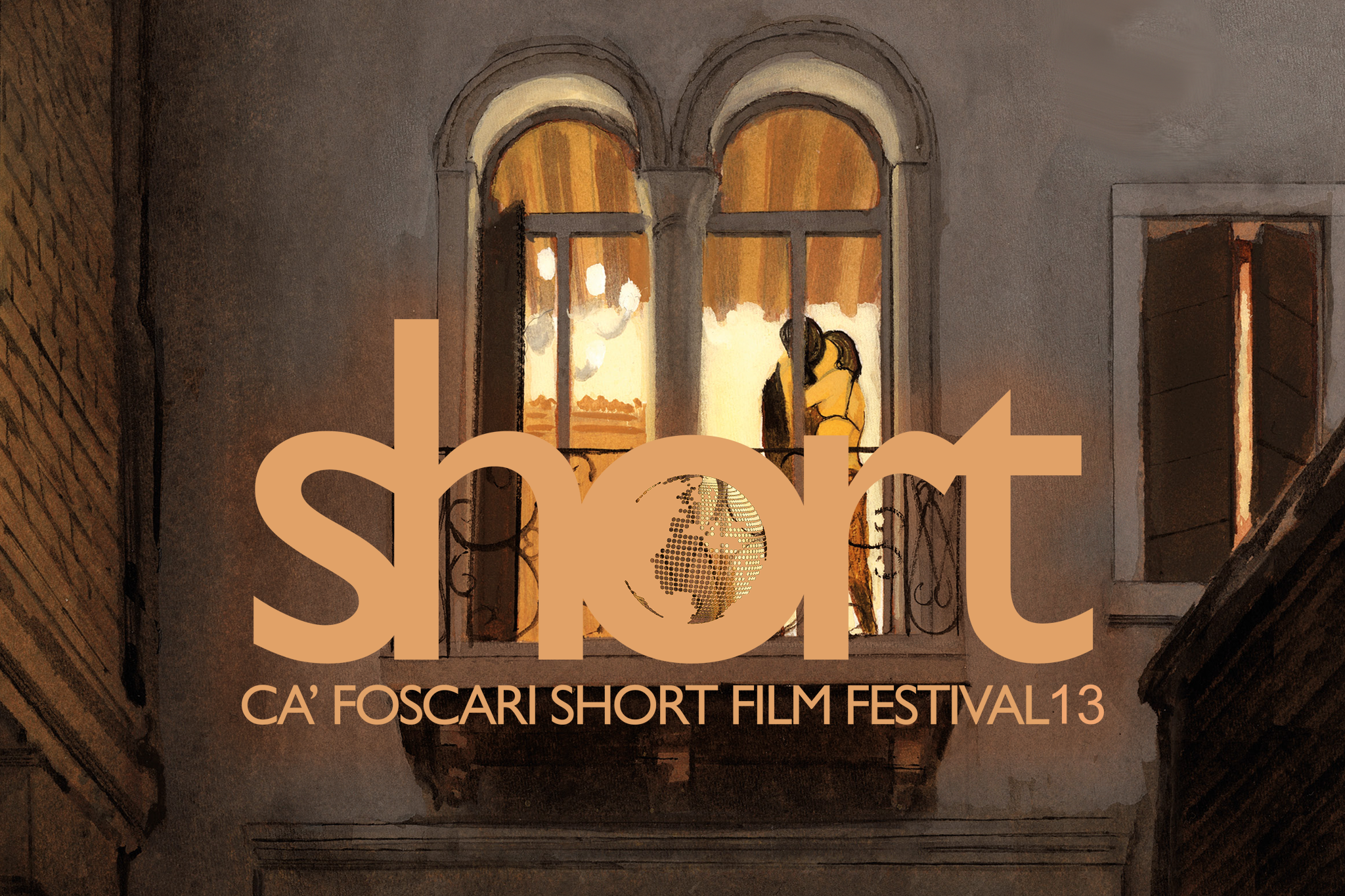
THE MEMBERS OF THE JURY MET THE AUDIENCE
EARLY CINEMA, THE ITALIAN VIDEOART AND INDIAN CINEMA
PRESENTATION OF TWO PARALLEL COMPETITIONS
As we look forward to the Festival’s closing ceremony (tonight at 7.30 pm at the Santa Marta Theatre), in which all the winners will be announced, and to the live show by Giovanni Dell’Olivo, yesterday’s events concluded the third day of the Ca’ Foscari Short Film Festival. In the past few days, we saw the screening of many short films in competition and the presentation of many special events and masterclasses held by experts of the art and film industry.
The program that opened yesterday morning’s schedule at Santa Margherita Auditorium was the High School Competition, during which seven finalist short films by high school students from all over the world were screened. These movies will be judged today by a jury composed by Ca’ Foscari students, highlighting the young nature of the Contest and its strong relationship with the students’ community. Then, another parallel competition was presented, the CINIT Music Competition, organized in collaboration with CINIT (Italian Cineforum), during which ten finalist videos coming from nine countries were screened. The videos will be judged by a prestigious jury composed by director and producer Giovanni Bedeschi, journalist and teacher Alice d’Este and CINIT board member Giordano Giordani. The music videos are directed by students who attend Film Universities or Film Academies from all over the world and they question the traditional role of film soundtrack by showing how cinema can put itself at the service of music.
Later, the Italian video art took center stage in the recurring event The Suspended Glance, curated by the artist Elisabetta Di Sopra, which again this year drew on the large Videoart Yearbook archive, a project of the University of Bologna. Central to the works presented, all made between 2005 and 2011, was the concept of performance and, therefore, the movement exploration and the body’s relationships with the surrounding space. Another great return was the one of Carlo Montanaro, film historian and creator of “La fabbrica del vedere”. He also presented The Shadow Comes to Life during the festival, a masterclass on early cinema. Montanaro guided the audience to a narrative through images, shadows, and silhouettes. He traced the evolution of this technique over time and its influence on contemporary cinema, which is in-between visual arts and films, as demonstrated in the ABC in Sound, a short film by Moholy- Nagy. Another recurring event of the festival already occurred on Wednesday at the Archeological Museum is the one with Indian cinema created by Cecilia Cossio, which this year was dedicated to the most important Indian film school, Whistling Woods International. Three shorts diploma films from the Mumbai School, founded by Subhash Ghai, one of the most prominent film personalities on the Indian subcontinent, were screened. The common feature of these films is the insight into social dynamics, such as The Nightingale (2019) by Shiva Katyal, in which the depiction of the love story between a Muslim girl and a Hindu soldier is a pretext for a deeper reflection on war.
Next, WeShort Originals & Branded Shorts will be presented, curated by the Festival WeShort, Italy’s first on-demand film platform in ‘short’ format, that once again shows how the digital era and an increasingly hectic lifestyle have altered the way people watch films. For the occasion, two films from the short series made by Guinness World Record were screened, particularly Caramelle, the first short film entirely produced by WeShort and directed by Matteo Panebarco. He chose the 3D animation to convey the atmosphere of magic realism that encapsulates this story about affection among different generations, which is so strong that it overcomes death itself.
One of the most eagerly awaited events was definitely the Special Jury Program. The audience had the opportunity to learn more about the rich artistic careers of the three members of the jury of the International Competition: Roberto Citran, Robb Pratt and Mika Johnson. The first to take the stage was the Padua actor, who briefly reviewed his career, claiming the importance of theater on his acting training, and then showed and commented on excerpts from some of his most famous films, such as Il prete bello (1989), Il mandolino del capitano Corelli (2001), Io sono lì (2011), Welcome Venice (2021) and Il toro (1994), for which he won a Coppa Volpi as best supporting actor in Venice. Finally, Citran wanted to dedicate a thought to one of the directors he collaborated with, Citto Maselli, who passed away in the past few days. It was then the turn of historic Disney animator Robb Pratt, who spoke about some of the works that have most influenced his artistic output, such as Bugs Bunny, Popeye, Star Wars, Indiana Jones and Back to the Future, and then previewed the graphic novel Eva Strongbird and the Marine, created in collaboration with British artist Des Taylor and inspired by pop-art. Finally, multimedia artist and filmmaker Mika Johnson told how it was seeing a David Lynch film that gave him the motivation to pursue a career in film. Johnson then presented Walter, one of the short films in The Amerikans series (2011-2013), as well as excerpts from his first feature film, Confessions of a Boxman (2020), and his first virtual reality work inspired by Kafka’s The Metamorphosis.
Eventually, the third day ended with the screening of six short films from the International Competition, starting with Ördögmuzsika by Karim Hema, which is about immersion in Hungarian folklore with a mute short documentary with a remarkable video and sound impact, and Minerva Rivera Bolaños with her En cualquier lugar, a short with a surprising point of view of a five-year-old girl, who observed and questioned the chaotic world of the adults. It was followed by the screening of Awel Mara by Hussein Hossam, who tried to show the complex communication between different cultures by narrating the story of a young Muslim girl who moved with her family to Europe. Afterward, 9-5 by Maša Šarović narrated humorously about the work pressure of a young advertisement editor, which also reflected on his sexual life. Later, Au Bord du Délire by María Claudia Blanco depicted the encounter of complete strangers in the metro, with different lives, but they had a recurring element: the consequences of Covid-19. The day concluded with the screening of Homeland of Silence by Štefánia Lovasová, which followed Ivanka’s story, a thirteen-year-old teenager being isolated and ignored by everybody due to a recent political attack.
Yesterday’s offer by the festival’s partners had a wide range as well: In Paradiso, La Casa del Cinema, and the Museo Archeologico Nazionale screened the shorts of the International Competition, the Museo d’Arte Orientale gave space to the special program East Asia Now, while three special programs were shown at Fondazione Bevilacqua La Masa.

